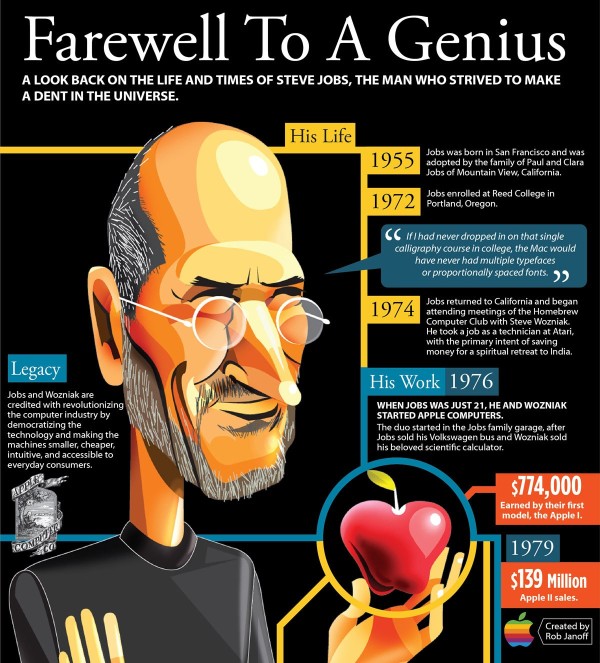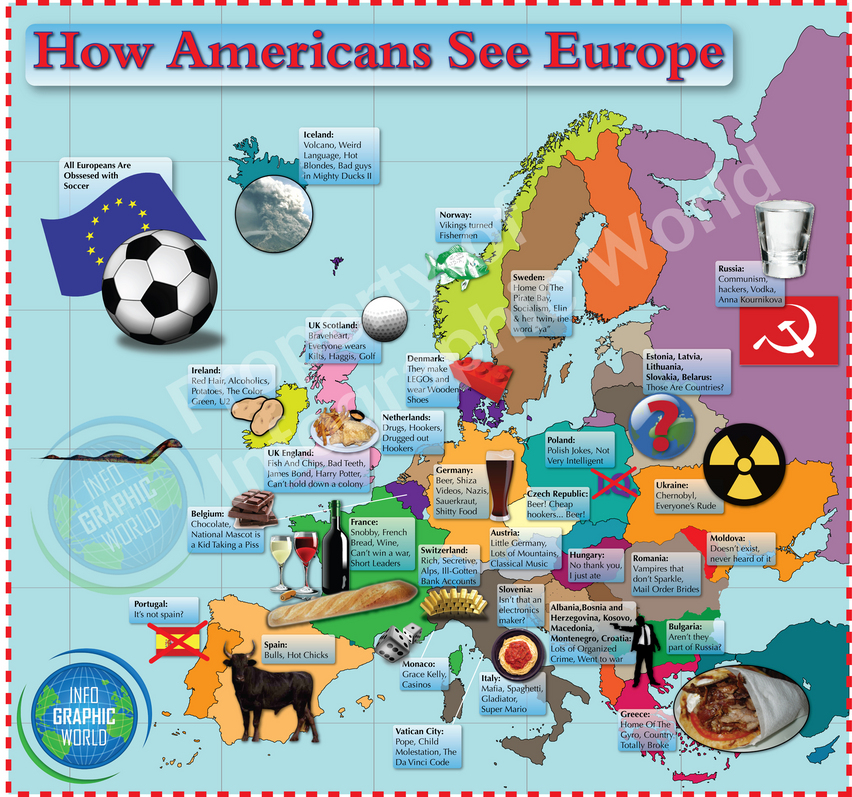A Picture Worth 10,000 Shares: 5 Questions With Infographic World Founder Justin Beegel
After completing a web design project for one of his MBA courses, Justin Beegel discovered he had a real passion for creating and sharing online content. While working full-time as a social media manager for a publishing firm, Beegel followed his passion and began accepting content strategy consulting jobs during the evening hours. “Every night, […]
 After completing a web design project for one of his MBA courses, Justin Beegel discovered he had a real passion for creating and sharing online content. While working full-time as a social media manager for a publishing firm, Beegel followed his passion and began accepting content strategy consulting jobs during the evening hours.
After completing a web design project for one of his MBA courses, Justin Beegel discovered he had a real passion for creating and sharing online content. While working full-time as a social media manager for a publishing firm, Beegel followed his passion and began accepting content strategy consulting jobs during the evening hours.
“Every night, from 6:00 p.m. to 3:00 a.m., I was working on side projects,” said Beegel. One project led to another until 2009 when Beegel, at the age of 23, made the leap and started his own interactive design agency Infographic World.
“I figured my worst case scenario was I failed and would have to find another job.”
Fortunately for Beegel, his agency thrived and before long he was working with a number of leading brands.
“I am a huge Knicks fan,” said Beegel, “But, I also really wanted to work with ESPN.” In 2012, Beegel’s agency created an infographic inspired by NBA basketball sensation Jeremy Lin whose popularity had exploded early in the year. Beegel said his team shared the infographic with everyone they could find connected to ESPN, and eventually landed the sports network as a client.
One of Beegel’s favorite infographics was a tribute his agency created to honor Steve Jobs. “I admired Jobs immensely,” said Beegel, “We pulled together all of our resources and created one of my favorite infographics in less than 24 hours.”
According to Beegel, his agency’s “Farewell To A Genius” infographic went viral, winning 10,000 Facebook and Twitter shares. Here it is in part; click for the full view:
As Infographic World’s Founder and President, Beegel spends most of his time focused on graphics, but today he was generous enough to offer a few words on what makes a great infographic – and what doesn’t, as well as insight on leveraging infographics to boost your SEO efforts.
5 Questions with Infographic World Founder & President Justin Beegel
 Amy Gesenhues: What was the last infographic your team created that went viral and were you surprised by the response it received?
Amy Gesenhues: What was the last infographic your team created that went viral and were you surprised by the response it received?
Justin Beegel: There’s an infographic we created not too long ago for a client that went about as viral as a piece of content possibly can. The client and topic was a bit controversial, but we were able to create it in a way that worked for everyone.
Our client was the largest adult entertainment company in the world (like I said, a bit controversial). The goal was to create a piece of content that would go viral. The challenge was to create something that was relevant, while being something major websites would be able to feature on their site.
We came up with an idea together that would utilize their internal data and analytics around what people searched on one of their sites, and then list the top 10 search terms used by state in the U.S., and then by every country in the world.
It was this big interactive map where you could click on any country in the world and see the top 10 search terms. I was a little nervous when we began promoting and marketing this infographic; I was worried websites would be too afraid to post the interactive map. We purposely made it contain no nudity at all, and had it live on a separate page on the client’s website that featured no pornography, so that it was Safe for Work (SFW).
Suffice it to say, the graphic was an absolute web sensation. Every major site from Huffington Post, to TechCrunch, Gizmodo, Buzzfeed, Popular Science, to major newspapers across the world, and hundreds of thousands of other website, all featured this infographic. The number of social shares was through the roof, and the number of major websites featuring it was absolutely amazing. I guess at the end of the day, the old saying that sex sells still is in play.
Amy Gesenhues: What insight do you have on creating an infographic most likely to go viral?
Justin Beegel: The first major component is mass appeal. To truly go viral, it has to appeal to more than just a small group or two. So first and foremost, create something that has a very large group of people who might be interested in viewing the infographic.
If you can create something that walks the thin line between controversial and acceptable, that always helps. People love to read things that are out of the norm. With the example above, getting to see what people in Pakistan, or Nigeria or South Dakota are searching for on porn sites is entertaining for the average person. Will it offend some people? Absolutely. Probably a lot of people. But if your goal is the content being viral, you have to be willing to accept that.
We created an infographic a few years ago that’s another example of this. I saw this really crude map that was a map of the U.S. and in each state was a few stereotypes that best described the people from that state. The infographic was called How Europeans view America. Call it American pride, call it seeing an opportunity, I quickly had our team put together a map of Europe and called it How Americans View Europe, in which we went country by country and made our own stereotypes.
The graphic spread like wildfire, actually crashing our server for an hour from too much web traffic. We also received some very angry emails from people from various countries in Europe, but the graphic served its purpose, was all in good fun, and was a living example of viral content:
Amy Gesenhues: What are marketers most likely to get wrong when designing an infographic?
Justin Beegel: One thing we ALWAYS stress to our clients when it comes to building infographics, is that the infographic itself is not about you (the client). If you want the content to be shared around the web, and hopefully go viral, you can’t have the infographic be commercial in nature. It can’t be selling something.
I saw an example of this recently. Maker’s Mark created an infographic about whisky. It caught my attention because Maker’s on the rocks is my drink of choice. I read the infographic simply because I happen to love the brand. As the owner of an infographic design agency, however, the infographic made me cringe.
Throughout the graphic they were touting the Maker’s Mark brand. This is a cardinal rule that was being violated. The second you start doing this, you are becoming nothing more than a pretty looking advertisement. The key is to create something of true value to readers, something educational, angling yourself as a thought leader within your industry, not saying how amazing your brand is.
If the content is great and educational and interesting, and has your logo at the bottom, that is the way to go. People will associate the high quality content with your brand.
Amy Gesenhues: What should marketers know when it comes to leveraging infographics in terms of SEO best practices?
Justin Beegel: When it comes to infographics and SEO, I think it’s pretty similar to how a website should function; there are certain things you should be doing internally (like on-site SEO tagging), and certain things you should be doing externally (getting high quality targeted websites linking back to you). These two principles apply to infographic marketing.
The first element is what you can do internally so to speak. One thing being how you name the infographic file when you put it on your website. Another being how you title the infographic when you go to post. Both of these need to be taken into consideration when you post the infographic, to get things started on the right foot.
The offsite part has to do with getting links back to your infographic. There are really two approaches here:
- Do it in-house, and identify the right people to reach out to, and diligently target and reach out and get these people to feature your infographic on their website, linking back to you.
- Hire a company to do it.
Whichever option you choose, the off-site linking is key for SEO benefits. Getting a website like a Huffington Post to feature your infographic, and link back to your site, is a huge plus because not only do you get the SEO value from a powerful site like Huffington Post, you are also getting added value from the likely 100s to 1000s of other sites that will now be linking to the Huffington Post page containing your infographic.
Amy Gesenhues: Are there any set rules to the type of content best served (and least served) by an infographic?
Justin Beegel: I would say there aren’t really rules so to speak. We’ve created infographics for just about every industry and topic on the planet. Everything from sports to cleaning companies, to tech, science, sex, and educational brands.
That said, there are definitely times where perhaps an infographic is not the best way to go. If the content is truly so boring and there is no way, even with the most creative people in the world, to make it interesting to readers, you may be out of luck. It all depends on who your end reader is. If the reader is someone who, unlike the masses, will actually be interested in reading the content, then it doesn’t really matter what others think.
We have from time to time recommended a client not use an infographic. It has often come up when a client simply wants to tout themselves, and is not willing to budget on this. It doesn’t happen TOO often, as we’re usually able to convince them that this is not a wise approach. But it has happened, and in those rarer situations, we’ve simply told the client that we don’t recommend it, and did not move forward.
For any infographic we create, we have to believe it will accomplish the client’s goal. If we truly know the specified goal will not be accomplished, it’s in everyone’s best interest not to move forward rather than keeping it to ourselves, taking the client’s money, and having them angry at us when the infographic doesn’t generate any exposure. No one wins there.
Contributing authors are invited to create content for MarTech and are chosen for their expertise and contribution to the search community. Our contributors work under the oversight of the editorial staff and contributions are checked for quality and relevance to our readers. MarTech is owned by Semrush. Contributor was not asked to make any direct or indirect mentions of Semrush. The opinions they express are their own.
Related stories

